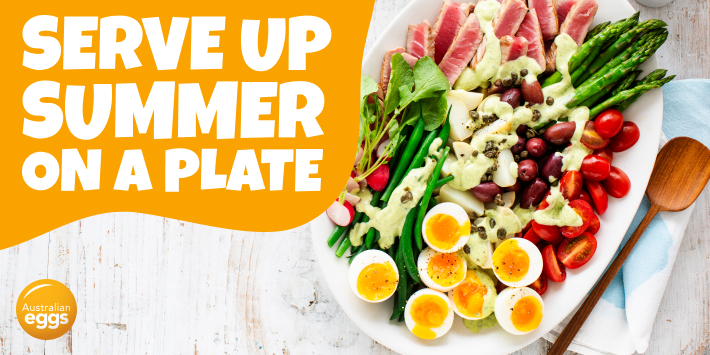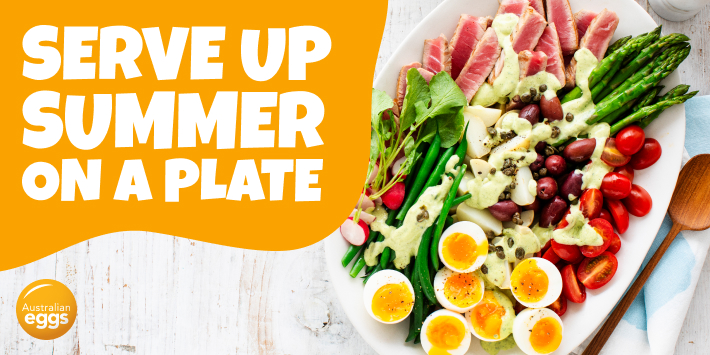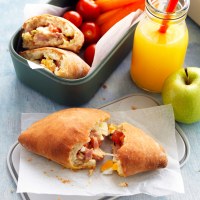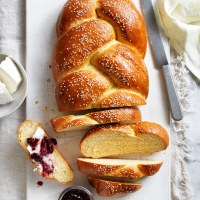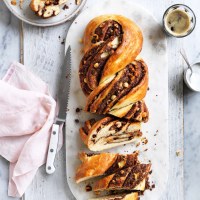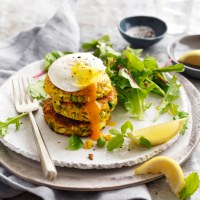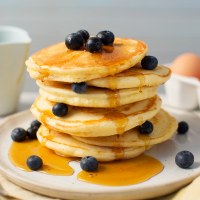How to make focaccia from scratch
This no-knead focaccia bread recipe is great for beginners. It's easy and has an irresistible topping of eggs, cheese and bacon. It's fantastic at any time of the day, and it keeps in the fridge for up to three days for easy snacking. Get the recipe and focaccia troubleshooting tips, you'll be a focaccia pro in no time.
Ingredients
- 4 cups (600g) bread flour
- 2 tsp dry active yeast
- 1 tbsp sea salt
- 1 ¾ cups (430mls) warm water
- ½ cup (125ml) olive oil, plus extra for greasing
- 8 eggs
- 1 cup (100g) grated cheddar cheese
- 150g middle cut bacon, cut into thin strips
- ½ small red onion, cut into thin wedges
- 3-4 fresh rosemary sprigs
Method
- Place flour, yeast, 2 tsp salt in a large mixing bowl. Add warm water and 2 tbsp of the olive oil. Using clean hands, bring mixture together to form a wet and sticky dough. Add a little more oil to bowl and grease mixing bowl. Turn dough in bowl to coat. Cover and set aside in a warm place until it doubles in size (approx. 1 hour)
- Pour remaining olive oil into a large 30cm x 40cm baking dish and swirl to coat evenly
- Punch dough to expel air and place inside oiled baking dish. Using your fingertips, stretch the dough to the edges. Cover again and set aside in a warm place to puff up, (approx. 30 minutes)
- Arrange oven rack in the middle position of the oven and preheat oven 240°C/220°C (fan-forced)
- Using the base of a small glass dusted in flour, press down into dough to make 8 evenly spaced indents. Open out indents more by pushing the dough back with your fingers. Sprinkle with 2 tsp sea salt and scatter over cheese, bacon, onion and rosemary around the indents
- Bake 15 minutes. Remove from oven and press the same glass into the indents to make them deeper. Crack 1 egg into each indent. Bake for a further 7- 9 minutes or until egg whites are set and yolks runny. Serve warm
Get the recipe that you can save to your myfoodbook cookbook here: Breakfast Focaccia
Focaccia making tips
Use a large bowl for the dough
Choose a bowl that is large enough to allow you to mix the dough with your hands, and can hold the dough when it doubles in size.
Grease the bowl generously
When greasing the mixing bowl, be generous with the oil. There should be enough to coat all of the dough. Oiling helps to prevent the dough from sticking to the bowl when it proves, and also prevents it from drying out and forming a crust.
How to make dough proof faster
Place the dough in a warm, draft free place in your kitchen to help it proof faster. For the dough to double in size in an hour, 25-28°C is the optimum temperature to keep it at.
If it’s a cold day, try these tips to keep your dough warmer:
OVEN METHOD: Preheat your oven on the lowest setting for a couple of minutes, then turn off. Cover the dough with a clean tea towel and position on the lowest rack of the oven. If the oven is too warm, leave the door partially open.
COOLER METHOD: Wrap bowl of dough in a large blanket or tablecloth and place inside an insulated cooler. Wet a tea towel and wring out excess water. Microwave on high for 60 seconds and place inside cooler with dough. Close lid to maintain warm temperature.
What does it mean to punch down dough?
As the dough proves, the yeast produces gases that puff it up. To punch down dough, you push down the dough with your fist to push air out of it. Punching (or knocking back) the dough partially deflates it, making it easier to shape and creating an even textured bread without large pockets of air.
Focaccia troubleshooting
Why is my focaccia dough so sticky?
It’s normal for focaccia dough to be sticky! As long as it isn’t a soup and you can turn it over and coat it with oil, your dough is probably fine.
This focaccia recipe is a “no-knead” recipe and the high hydration helps the gluten to form without kneading. High hydration has other benefits too, including moister finished bread that keeps well for days.
Why isn’t my focaccia dough rising?
This is likely because your yeast is too old or dead. Use dry active yeast that isn’t past its use by date. To check it if it’s still active:
- Mix yeast with a little warm water (not hot, this can kill it) and a pinch of sugar.
- Stand 5-10 minutes in a warm, draft free place.
- Check for bubbles on the surface of the water.
If there are bubbles, that means the yeast is alive and ready to use, simply add it to the recipe as is. If there’s no change, the yeast is dead. Discard and buy fresh.
TIP: Dry active yeast can be stored in the freezer to prolong its life.
Why is my focaccia dense?
Focaccia can turn out dense for a few reasons.
- Not enough water: This can leave you with dense, dry focaccia. For accuracy, measure out your ingredients using weight instead of cups to ensure you have the right ratio of ingredients.
- Not proved enough: Depending on the temperature, focaccia dough can take anywhere between 1-3 hours to proof. The dough is properly proved when it’s doubled in size and the surface springs back when poked.
- Oven temperature: If the oven is too cold, it can lead to dense bread as it doesn’t heat the gases in the dough enough to make them expand and rise. Preheat the oven and don’t leave the door open too long when placing focaccia inside. This ensures the oven is nice and hot. If your bread still turns out dense, it may be worth checking the oven temperature using an oven thermometer.
How long can you let the dough proof?
If your dough has doubled in size but you're not ready to bake yet, cover it in plastic wrap and move it to the fridge for up to 24 hours. If your dough is proving in the fridge, you can keep it in the fridge for up to 24 hours after it has doubled in size, although be careful that you don't allow the dough to prove for too long.
Focaccia topping ideas
These flavour combinations work well with the eggs on top of your focaccia:
- Olive oil and salt
- Fresh tomato slices, basil leaves and olives
- Rosemary or thyme with chunks of mozzarella
- Fresh cherry tomatoes, minced garlic and crumbled feta
- Roasted capsicum and eggplant
- Minced garlic and grated parmesan
More baking recipes
Interested in more baking ideas? Check out the recipes below!

